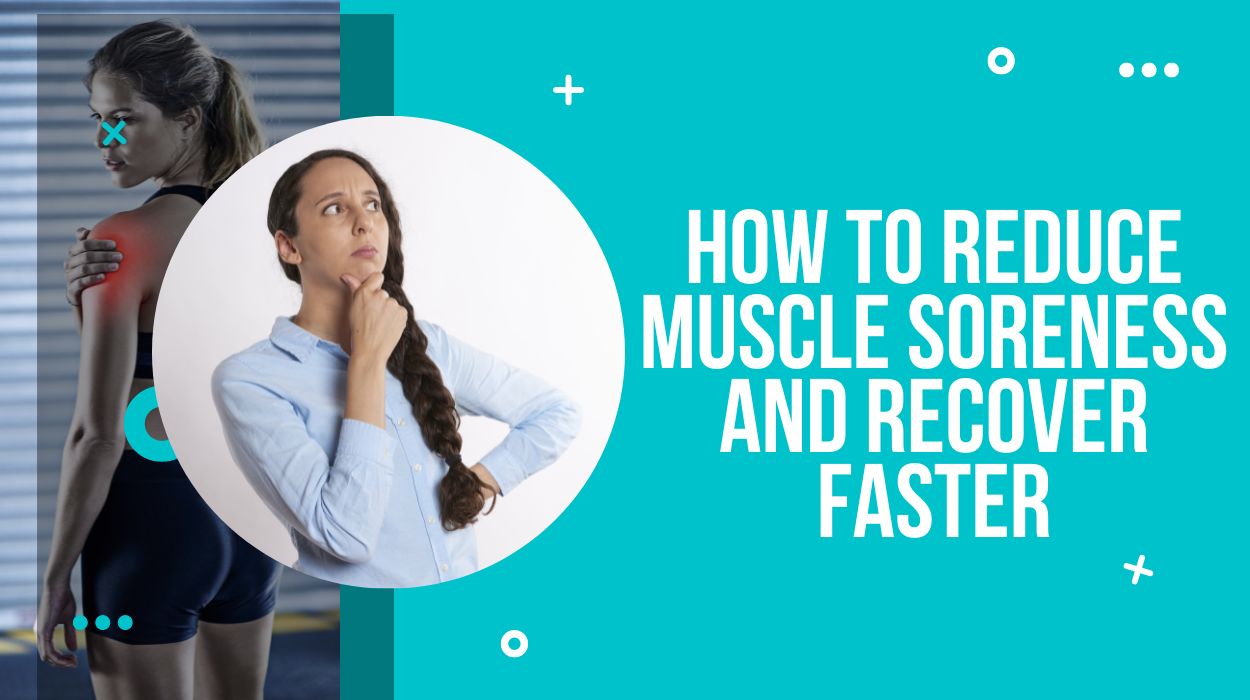Do your muscles have increasing and steady pain after doing some exercise that your body was not used to? The pain only means that your body is getting accustomed to the new workout and preparing itself for the next stage.
Delayed onset muscle soreness(DOMS) or in simple terms “muscle fever” is a common sharp aching feeling and tenderness in muscles after doing intense exercises. However, this is nothing to worry about! DOMS is likely to get better on its own in a few weeks.
It could still be very distracting and exhausting to deal with, especially when you have other tasks to get to.
You can manage and reduce the duration of the soreness with some very easy tips and precautions.
We’ll talk about the importance of precautionary steps, helpful massages, nutritional values to add to your diet, supplementary intake and therapy techniques for soothing the increasing pain.
How To Prevent Muscle Soreness And Recover Faster
Prevention is always better than cure. In case of muscle soreness, prevention is done in very simple steps that are easy to remember.
1. Stretching
Stretching is a must before engaging your muscles in any type of exercise, especially something you haven’t done before. Stretching ensures you keep the tissue quality and tissue length in its original form. You can also do this during and after a workout.
2. Warm-Up
Warm-up before any heavy exercise. Avoid getting to it right away. Warming up reduces stiffness and soreness caused by extensive training. For example, doing bench press with an empty barbell, doing pushups, using light-weight dumbbells.
3. Keep Yourself Hydrated

Keep yourself hydrated, especially on the days of workouts. Dehydration can amplify muscle pain and slow down the healing process. Hydration could lower exercise-induced muscle damage and boost recovery. . Try starting your day with a glass of water.
4. Stay Consistent
Stay Consistent as going off-grid for a long time could make your muscles less likely to adapt to an exercise. Do little exercises here and there apart from the main one that causes pain. But do not forget to give your muscles some rest before the next session.
5. Correct Footwear

Correct footwear must be worn during exercises or in situations when you have to stand for a very long time. These could be shoes recommended by your doctor or any shoes with a comfortable and hard soul.
6. Correct Posture
Correct posture is very crucial to any workout. At best you’re doing the exercise wrong and at worst you can give yourself preventable pain and injury. Always check the correct form before starting.
7. Sleep

Sleep however insignificant it may seem should not be overlooked. Sleep is when our body does most of the healing and recovering of itself. Muscle tissues need repair time.
Prevention could save you time and trouble but it has its limitations. Now let us look at how you can reduce muscle soreness post-workout.
8. Massaging Muscles
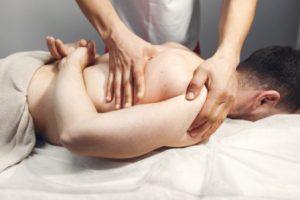
Massaging could bring down DOMS symptoms by 30% and lessen the swelling of muscles.
Common techniques to massage sore muscles:
- Petrissage: this is a deep pressure massage for muscle tissues. It could loosen muscles and nurse muscle spasms by freeing up knots and breaking up adhesions. Adhesions are close-packed connective tissue that occurs after muscular injury.
- Kneading: This is also applied with a deep pressure across the affected area in a kneading-like manner. This could realign previously disrupted collagen fibres. It can stretch the muscles and increase flexibility and increase the flow of blood circulation.
- Skin rolling: This is done by pulling at the skin in a forward and backward motion. This could warm up your muscles, set them loose, and increase tissue elasticity. It also induces psychological relaxation.
- Self-massage: You’ll probably jump the moment someone else’s hand touches you even slightly during the period of muscle soreness. If you cannot do even basic tasks like holding your phone to your ears you should gently massage the affected muscles with your own hands. You’re the only one who knows your tolerance level and the amount of pressure you can handle.
Caution: If you’ve suffered an injury you should stay away from the massage table. We know sometimes you just want to dive into deep-tissue massage after experiencing soreness but it makes matters worse. Consider waiting 24-28 hours and consult a physician.
9. Nutrition For Recovery

Nutritional health is the main part of any form of recovery. Nutrients are the pillars of your biological health and facilitate healing.
Your diet should include these 3 nutrients for treating muscle soreness:
Protein:
The building blocks of muscles are made up of proteins(amino). Protein promotes muscle healing and growth. It should be consumed throughout the day rather than a single time.
Sources: Meat, eggs, low-fat cheese, and soy-based foods.
Vitamin C And Zinc:
These are the standout nutrients for muscle recovery. Vitamin C is used by the body to make collagen, a protein that connects the muscles and provides support. This helps heal tendons and ligaments.
Sources: For Vitamin C, these are citrus fruits, kiwi, broccoli and strawberries.
For zinc, any animal-based foods, meat and fish, dairy products.
Fatty Acids:
Fatty acids are very important to be taken through dietary intake because our bodies have no biochemical way to make them on their own. These are anti-inflammatory and speed up recovery. They can fasten the protein-making process of the body as well.
Sources: Vegetable oil, fish oil, nuts, seeds, animal fats.
For a personalized food chart, consult a dietician.
As important as dietary nutrition is, not all of it is possible to be consumed by food, which is why supplements exist.
10. Supplements For Muscle Recovery
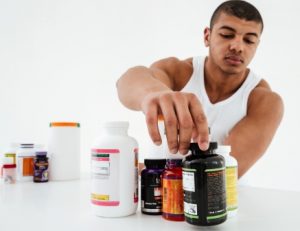
You might have noticed that professional athletes perform several days in a row. Cricketers can play matches for seven consecutive days. Have you wondered why they don’t wait for their muscles to recover from the excessive exertion? Well, the answer lies in supplementary intake.
Supplements have the work of either promoting the synthesis of a protein or reducing muscle soreness. Some supplements worth trying out are:
- BCAA (branched-chain amino acids): It is beneficial for lessening EIMD(exercise-induced muscle damage. BCAA can activate protein synthesis and to an extent reduce the symptoms of delayed onset muscle soreness.
- Glutamine: It eases the overall process of muscle recovery. It improves the process of muscle repair by stimulating tissue repair. It can help fight symptoms of fatigue as well.
- Magnesium: If you don’t want to increase your chances of muscle cramps you must take Magnesium. Magnesium is a muscle relaxer and in turn, assists muscle recovery. It ensures healthy muscle contractions.
- Extraction tart cherry juice: Many people swear by this for fully healing muscles post-workout. This extract is used to bring down inflammation. A study says that consuming tart cherry juice several times a day will cut down on post-exercise muscle pain.
Supplements should be taken with the advice of a doctor. Make sure you’re not taking more than the recommended dosage.
Apart from nutritional elements, there are also some lesser-known forms of muscle relaxing techniques that we all should know about.
11. Whole-Body Vibration Therapy
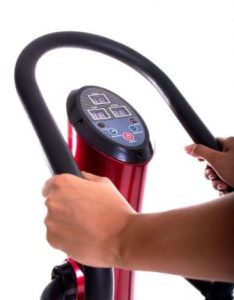
Whole-body vibration is a broad term. It refers to any amount of outside mechanical vibration transferring to your body. Vibrations can be therapeutic in soothing muscle soreness and their recovery. It can increase blood flow under your skin.
You can take vibration therapy by standing or laying still on a vibrating, platform-like machine. There are also vibration chairs.
You needn’t apply vibration to the whole body if you don’t want to. You can do a localised version of muscle recovery via vibration therapy.
12. Hydrotherapy
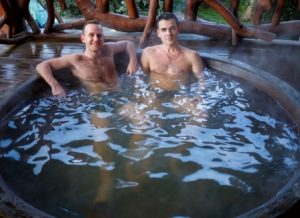
Hydrotherapy therapy is the application of water in varying ways. Our bodies react to the cold and hot application of water. Water is naturally therapeutic for bodies because it awakens the touch receptors on our skin.
The warm water used during hydrotherapy could ease the pain of our sore muscles. Stiff and jammed muscles start to loosen up.
Apart from this, hydrotherapy could improve sleep, reduce stress, bring down anxiety etc.
If you wish to do this long-term, we’d recommend you buy a hot tub. Although, a hot shower would do the job as well.
FAQ
1. Should I wait until the soreness is completely gone before working out again?
It all depends on how sore you feel. If the pain is manageable you are good to work out again. If the pain is not tolerable, evaluate whether you should see a doctor.
2. If I’m not getting sore after working out anymore, is it bad?
A: Most likely not. It probably means your body has adapted to the previous workout and gotten stronger. It’s time to challenge yourself and take things to the next level.
You May Also Like To Read:
Muscle Memory For Bodybuilding
How Much Protein Do You Need to Build Muscle?
Summary
So now that you know you should stretch and warm up for exercise, include more proteins in your diet, take supplements and massage the affected area, you will be able to manage muscle soreness.
Do you think muscle soreness is a good pain or a bad pain? Do you fear starting exercising just because of the soreness you’ll feel the next day?
We’d like to know your thoughts and any other tips and tricks you might have for minimizing muscle soreness and a speedy recovery.

